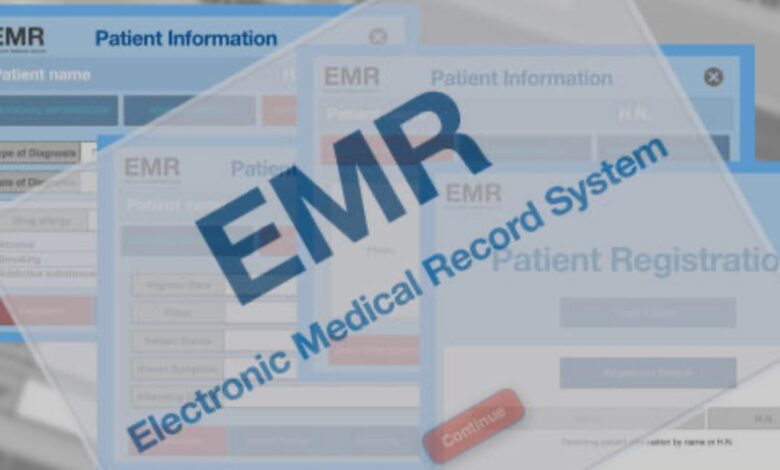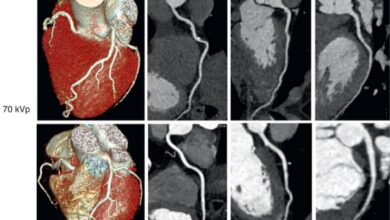EMR + AI = 40 PLUS

For at least 20 years, doctors have incorporated electronic medical records (EMR) in the day-to-day functioning of their offices. EMR, or in some quarters, EHR (electronic health record), was marketed to physicians as the perfect tool to improve documentation of the patients’ visits, lab results, and consultations with the end benefit of increasing reimbursement for the care they provided. That was the ploy vendors, and there were many, employed to “entice” doctors to spend $25,000 to $40,000 on an EMR system. I investigated many systems and sat through numerous sales presentations in the hope of deciding if there was a product that would work for me. As a solo practitioner, however, I could never see how such a system would increase my revenues nor could I justify the high cost. I left solo practice for a group practice having never pulled the trigger to obtain an EMR.
However, the practice I joined in 2007 had already purchased and fully implemented an electronic health record system. I liked the program and had no problem learning to use it. Right away I noticed it took longer to record all the data required to document a patient visit than it had with paper charts. It resulted in seeing fewer patients every day. Fewer patients means lower revenue, and lower revenue mean lower income.
A few years later, Medicare devised a monetary incentive program to make doctors more excited about buying and using an EMR system. This program was called “meaningful use.” If the doctor complied with the criteria of the program, he was promised an $11,000 bonus over five years. Doctors accepted it without knowing the details. The devilish details were phase one had 38 criteria. Then came phases 2 and 3 which were worse. It was so complex and onerous that overnight I went from seeing 35-40 patients a day to 25-30. There was so much more documentation and so many more requirements that I literally spent more time satisfying the requirements of “meaningful use” than I did seeing patients. It really slowed me down. In today’s medical reimbursement world, seeing fewer patients makes it harder to pay the overhead expenses as well as the physician’s salary.
“Meaningful use” went the way of the Edsel and VCR’s, thank goodness! It was a reasonable idea, but getting the small financial incentive dangled by Medicare was much more trouble and more time consuming than it was worth. Unfortunately, one reason I retired when I did was “meaningful use.” It “died” not long after I retired.
Eleven years later (I retired 11 years ago!), I now read about a system using AI that is coupled to the EMR. Called “ambient listening,” this system functions as a “virtual scribe.” During office visits, this program records the doctor-patient interaction, uploads (sends) the information to a “cloud server,” where artificial intelligence automatically transforms it into a transcription of the content of the visit. In other words, simply by recording the doctor-patient interaction, the AI system drafts a note containing all the information discussed and inserts it into the electronic medical record. AMAZING! “With the patient’s consent, the doctor opens an app on his phone, records the visit, and uploads the audio [to the AI system] when the visit ends.” The AI program and the EMR then combine to generate an email with the visit transcription attached. It doesn’t just send a verbatim transcript. Rather, it organizes the information into the standard format for a doctor visit. AI incorporates “relevant clinical information [lab and imaging results] and live data, and folds [it] in a treatment plan.”
When I was in practice, if I had had a system like this, I could have seen patients non-stop all day long. Imagine seeing a patient and not having to stare at a computer screen and manually input information into the system. Your hands are free to examine the patient while you verbally relate your findings. You’re free to ask questions and the answers are automatically recorded and transcribed. After the visit you can go immediately to the next patient because all the information from the visit has been captured and integrated by artificial intelligence. I wouldn’t have had to spend 5-10 minutes completing the chart note. What an incredible time-saver! What an incredible tool to improve efficiency and quality of care!
Indiana University Health has begun implementing these systems in their family medicine, internal medicine, emergency medicine, cardiology, and pediatric offices. Physicians who opt to use this system have largely found it to be “a great service,” and “enjoyable.” Some have concerns over the accuracy of the notes, but most have found it to be helpful.
EMR systems have become a repository for organizing and storing patient information and aren’t the center of the medical-information universe any longer. Like I said before, having a system like this would have made me a happy, more efficient doctor who could have seen more patients and enjoyed practice even more than I did. In my case, EMR + (combined with) AI = (would result) in seeing 40 or more patients (plus) a day! This is a great example of how AI can improve efficiency, save time, and simplify life.
Reference: Harris M. AI: Coming to an exam room near you. IU Medicine 2025 Winter:17-19.




